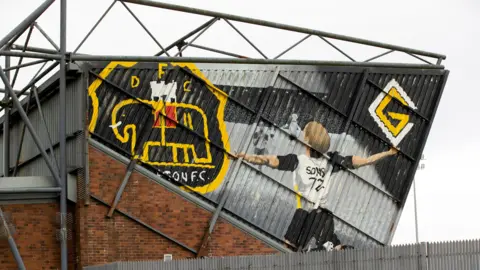 social networks
social networksWith two SPFL clubs entering administration in the space of a month, it is reasonable to wonder what is happening and whether this is the start of a worrying trend.
He Dumbarton FC news after Inverness Caledonian Thistle faces insolvency It may come as a surprise to some fans, but the shock is not felt in the boardrooms of other clubs.
An SPFL source told me that they are aware that other clubs are facing financial problems, but that there are no other administration announcements imminent.
Those seeking assurance that these are isolated problems will not get it from those running the game.
That’s because they know week to week. Challenges many clubs face just to keep managers out the door..
Those who run the clubs and fight those battles are never willing to speak publicly about financial concerns.
A mix of boardroom etiquette and a reluctance to tempt fate keeps conversations with journalists mostly off the record.
What is clear, however, is that many share the same concerns for the same reasons.
“The problems faced by most small businesses are felt in exactly the same way by some of the football clubs in this country,” said one club owner.
The problem has nothing to do with the client. Scottish football has the best attendance per capita in Europe.
It is true that many clubs feared fans would stay away after Covid, but while their loyalty remains, many clubs feel the game in Scotland is suffering from the effects of the pandemic.
Clubs are now repaying recovered government loans that were designed to keep small businesses afloat during the pandemic.
Most received financial help to the tune of around £50,000 when matches were played behind closed doors, and while that doesn’t sound like much, coupled with other concerns, it is far from negligible for clubs unable to show millions in revenue. . .
“The clubs have not recovered the same income since Covid,” said another owner.
Who is next?
The biggest problem for most is the decline in sponsorship and hospitality revenue.
Most lower league community clubs rely heavily on local businesses to stay afloat. The butcher, the takeaway or the taxi company are the ones who buy hospitality packages or sign sponsorship deals.
When those companies feel the pressure of the cost of living crisis, energy increases or the recent National Insurance increase, they cut costs and very often football fails.
“It’s the part no one thinks about, but it’s very obvious,” said the president of a League One club.
Fan loyalty is not enough to financially cleanse most Scottish clubs; In fact, it is usually a small percentage of turnover for most.
The majority of income comes from SPFL payments and sponsorships.
The League is doing everything it can to help ease the burden with record payments to clubs announced earlier this year, but they know that without the support of local businesses, many will face ruin.
 Public address media
Public address mediaOther topics mentioned include player salary inflation.
A League One chairman told me that five years ago his players earned an average of £175 a week. This figure has now increased to around £300 per week.
The spending power of some clubs with wealthy sponsors, determined to move up the leagues quickly, could be the reason, but the issue is being discussed with some concern in the boardrooms of some clubs struggling to keep up.
So, in terms of management, who’s next?
This is also a cause for concern, with boardroom rumors surrounding a couple of well-known clubs in particular.
We won’t know for sure until administrators come calling, but with some clubs struggling it seems a matter of when rather than if.


